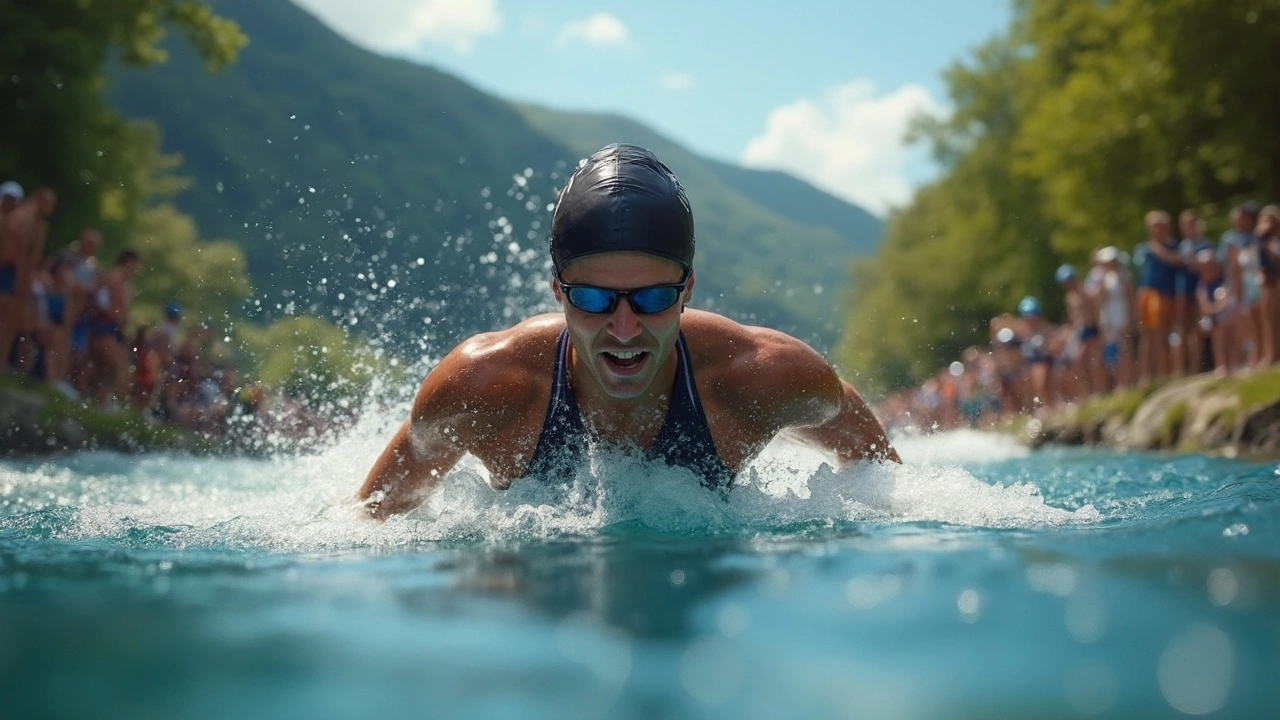If you've ever heard an athlete rave about the benefits of sports massage, they aren't just talking about pampering. It's actually a game-changer in sports medicine. Imagine feeling those post-workout aches melt away or bouncing back quicker from an injury. That's sports massage working its magic.
This style of massage isn't about scented oils and soft music. It's focused on targeting muscle groups used in sports for faster recovery, injury prevention, and enhanced performance. Athletes, whether you're a seasoned marathoner or just someone who enjoys a good run, sports massage can be your secret weapon.
Think of it this way: Your muscles are like an engine. They need regular maintenance to keep running smoothly. Without it, you risk breakdowns—aka injuries. Sports massage is that regular tune-up, keeping everything in tip-top shape. Curious about the specifics? Let's dig into the why, how, and where of sports massage.
- Understanding Sports Massage
- Key Benefits for Athletes
- Techniques and Tools
- Integrating Into Training
- Tips for Finding a Good Therapist
Understanding Sports Massage
Let's cut to the chase—sports massage isn't your run-of-the-mill spa day. Designed for athletes and active people, it's all about focusing on those muscles you push the hardest and helping them recover.
At its core, this type of massage zeroes in on muscle groups that get worked heavily during sports or exercise. It's not just about relaxation—it's about improving function and relieving muscle tension. Through techniques like deep tissue manipulation and stretching, sports massage helps boost flexibility and reduce that pesky post-exercise soreness.
What's really fascinating is the history of this lifesaver. It dates way back, with roots in ancient Greece, where athletes used it as part of their training routines. These days, it's fully backed by modern sports medicine, offering key benefits like faster recovery times and fewer injuries.
Therapists often use a combination of techniques during a session, taking into account specific needs and goals. The focus might be on increasing muscle efficiency, reducing recovery time, or even improving mental clarity. It's super personalized.
Interestingly, a study revealed that regular sports massage can not only help reduce delayed onset muscle soreness (that stiff feeling you get a day or two after intense exercise), but it can also positively affect athletes' mood and mental focus.
A typical session might look a bit different depending on what's going on with your muscles. If you're gearing up for big competitions, it can help prepare your muscles and even calm pre-game jitters.
Key Benefits for Athletes
Alright, so what's the deal with sports massage? Why are athletes so hooked on it? Let's explore some of the big benefits.
Faster Recovery: One of the most significant perks is quicker recovery times. After a grueling workout or competition, muscles can feel like jelly. Sports massage helps flush out toxins from muscles, reducing soreness and stiffness. This means you're back in action sooner rather than later.
Injury Prevention: Ever worried about pulling a hamstring or tweaking your back mid-game? Regular sports massage sessions help increase flexibility and joint mobility, which lowers the risk of injuries. Think of it as your body's insurance policy.
Improved Circulation: Better blood flow means more oxygen and nutrients getting to your muscles. This keeps them healthy and performing at their best. In fact, improved circulation is why some athletes find they perform better after a massage.
Based on data, here's a quick look at what athletes have experienced:
| Benefit | Percentage of Athletes Reporting Improvement |
|---|---|
| Reduced Soreness | 85% |
| Enhanced Recovery | 78% |
| Improved Flexibility | 72% |
The stats speak for themselves. It's clear that these benefits aren't just hype; they're real and widely reported.
Mental Boost: It's not all physical. Having regular massage sessions can reduce stress and anxiety, leaving you feeling mentally refreshed. That’s a big deal when you're gearing up for a big game or trying to maintain focus during training.
So whether you're going for gold or just trying to beat your own personal record, sports massage can help you stay on top of your game. Who wouldn't want to feel a bit more invincible?

Techniques and Tools
When it comes to sports massage, the techniques used are tailor-made to meet the needs of the athlete. Forget your standard massage methods; this is about getting into the nitty-gritty and focusing on the muscles most in play during your activities.
Let's start with the basics. One popular technique is called effleurage, which is basically long, sweeping strokes. This helps increase circulation and get your blood flowing, so muscles are ready to perform at their best. They follow up with petrissage, which kneads the muscles to work out those nasty knots and improve flexibility.
Then there's friction, a deeper, circular technique that really zooms in on problem areas. Ever dealt with a stubborn knot that just won't quit? Friction might just be your best bet.
Besides these, sports massage therapists often use certain tools to amp up the benefits. Foam rollers and massage balls, for example, are great for self-massage and continuing muscle care at home. Therapists might also use hot stones or even cupping to improve muscle relaxation and blood flow.
Here's a cool part about sports massages: They sometimes include stretching techniques. Think of it as an added bonus that enhances range of motion. This can prevent strains, especially when you're pushing your limits in sports.
And just because tech is everywhere, some therapists even bring in gadgets like massage guns. Ever seen top athletes using a handheld device to thump their muscles? That's a massage gun, providing deep tissue massage through rapid yet gentle vibrations.
Whether you're looking to alleviate muscle soreness or boost athletic performance, knowing these techniques and tools can make all the difference. Next time you're prepping for a big game or recovering from a tough workout, consider how sports massage could step up your game.
Integrating Into Training
Wondering how to make sports massage a regular part of your training routine? It's simpler than you might think. Whether you're gearing up for a big game or just want to stay in peak condition, massage can be a secret weapon in your fitness arsenal.
For starters, scheduling regular sessions can be a game-changer. Depending on your sport and intensity, a massage once a week might be optimal. Not sure if that's viable? Think of it as a way to ensure you keep performing at your best without unwanted downtime. Plus, post-massage, you'll often notice improved flexibility and less muscle soreness.
Timing is also crucial. Many athletes find that getting a massage a day or two after a tough workout or event aids recovery. It helps the muscles repair quicker and reduces that unpleasant post-exercise muscle stiffness. On the flip side, a light massage just before a competition can warm up the muscles and prevent injuries.
And let’s not forget about the in-between moments. Even if you're unable to benefit from full sessions regularly, self-massage techniques using foam rollers or massage sticks can do wonders in keeping the body tuned.
| Frequency | Benefit |
|---|---|
| Weekly | Maintain flexibility and prevent injuries |
| Post-event | Aid recovery and reduce soreness |
| Pre-event | Warm-up muscles and enhance performance |
Remember, integrating sports massage into your routine isn’t just about visiting a masseuse. It’s about letting those mindful, healing touches become part of your sports medicine toolkit. And when you do that, you're keeping your muscles happy and your performance sharp.

Tips for Finding a Good Therapist
Finding the right sports massage therapist can feel a bit like finding the perfect pair of running shoes. It takes some effort, but once you get it right, it makes a world of difference.
First off, check their credentials. Not all massage is created equal, and for sports massage, you want someone who's certified and has experience dealing with athletes. Look for certifications like National Certification Board for Therapeutic Massage and Bodywork (NCBTMB) or equivalent.
"A good therapist understands the unique demands placed on athletes and can tailor their techniques accordingly," says Dr. Sarah Williams, a prominent sports medicine physician.
Next, ask around in your sports community. Word of mouth is powerful, and personal recommendations from fellow athletes can lead you to a therapist who really knows their stuff. You might even get insights into specific techniques they excel at, like deep tissue or myofascial release.
- Consult before you commit: A decent therapist will offer a consultation. Use this time to discuss your athletic routine and any specific aches or injuries you have. It’s kind of like an interview—make sure their approach fits your needs.
- Ask about tailored sessions: Not all athletes are the same. Your sports massage sessions should be as unique as your training schedule. A good therapist will adapt their methods to target your specific muscle groups and issues.
- Check availability and location: Consistency is key in recovery. Make sure the therapist’s schedule aligns with yours and that they’re conveniently located. Travelling an hour post-massage can be counterproductive!
Some even suggest looking at reviews online, though take them with a grain of salt. It’s the overall consensus you're looking for, not just one or two glowing or terrible reviews.
Finally, trust your instincts. If a session doesn’t feel right, or if the therapist isn’t responsive to your feedback, it’s okay to try someone else. After all, this relationship can be a crucial part of your athlete recovery plan.






